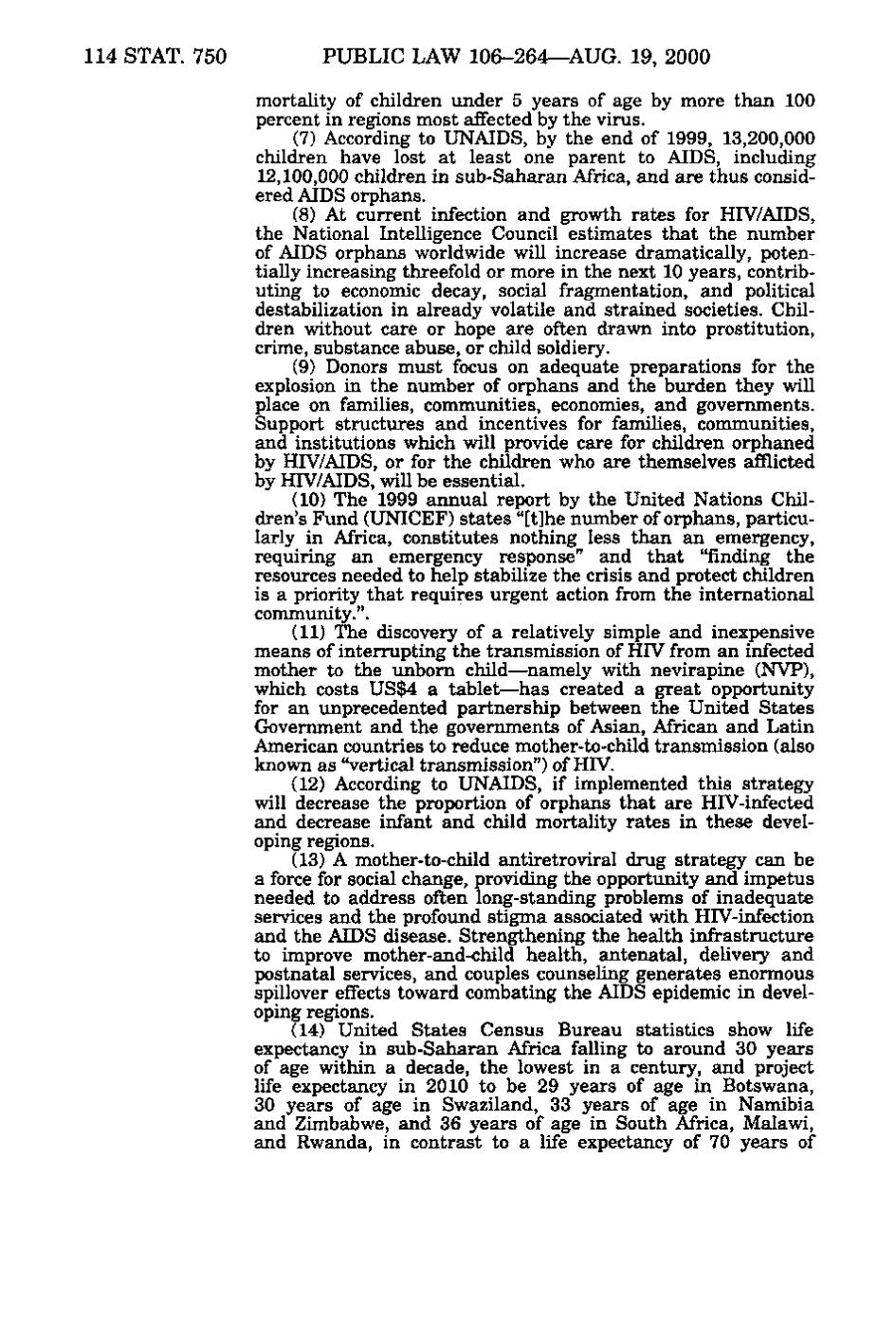114 STAT. 750 PUBLIC LAW 106-264—AUG. 19, 2000 mortality of children under 5 years of age by more than 100 percent in regions most affected by the virus. (7) According to UNAIDS, by the end of 1999, 13,200,000 children have lost at least one parent to AIDS, including 12,100,000 children in sub-Saharan Africa, and are thus considered AIDS orphans. (8) At current infection and growth rates for HIV/AIDS, the National Intelligence Council estimates that the number of AIDS orphans worldwide will increase dramatically, potentially increasing threefold or more in the next 10 years, contributing to economic decay, social fragmentation, and political destabilization in already volatile and strained societies. Children without care or hope are often drawn into prostitution, crime, substance abuse, or child soldiery. (9) Donors must focus on adequate preparations for the explosion in the number of orphans and the burden they will place on families, communities, economies, and governments. Support structures and incentives for families, communities, and institutions which will provide care for children orphaned by HIV/AIDS, or for the children who are themselves afflicted by HIV/AIDS, will be essential. (10) The 1999 annual report by the United Nations Children's Fund (UNICEF) states "[t]he number of orphans, particularly in Africa, constitutes nothing less than an emergency, requiring an emergency response" and that "finding the resources needed to help stabilize the crisis and protect children is a priority that requires urgent action from the international community.". (11) The discovery of a relatively simple and inexpensive means of interrupting the transmission of HIV from an infected mother to the unborn child—namely with nevirapine (NVP), which costs US$4 a tablet—has created a great opportunity for an unprecedented partnership between the United States Government and the governments of Asian, African and Latin American countries to reduce mother-to-child transmission (also known as "vertical transmission") of HIV. (12) According to UNAIDS, if implemented this strategy will decrease the proportion of orphans that are HIV-infected and decrease infant and child mortality rates in these developing regions. (13) A mother-to-child antiretroviral drug strategy can be a force for social change, providing the opportunity and impetus needed to address often long-standing problems of inadequate services and the profound stigma associated with HIV-infection and the AIDS disease. Strengthening the health infrastructure to improve mother-and-child health, antenatal, delivery and postnatal services, and couples counseling generates enormous spillover effects toward combating the AIDS epidemic in developing regions. (14) United States Census Bureau statistics show life expectancy in sub-Saharan Africa falling to around 30 years of age within a decade, the lowest in a century, and project life expectancy in 2010 to be 29 years of age in Botswana, 30 years of age in Swaziland, 33 years of age in Namibia and Zimbabwe, and 36 years of age in South Africa, Malawi, and Rwanda, in contrast to a life expectancy of 70 years of
�
